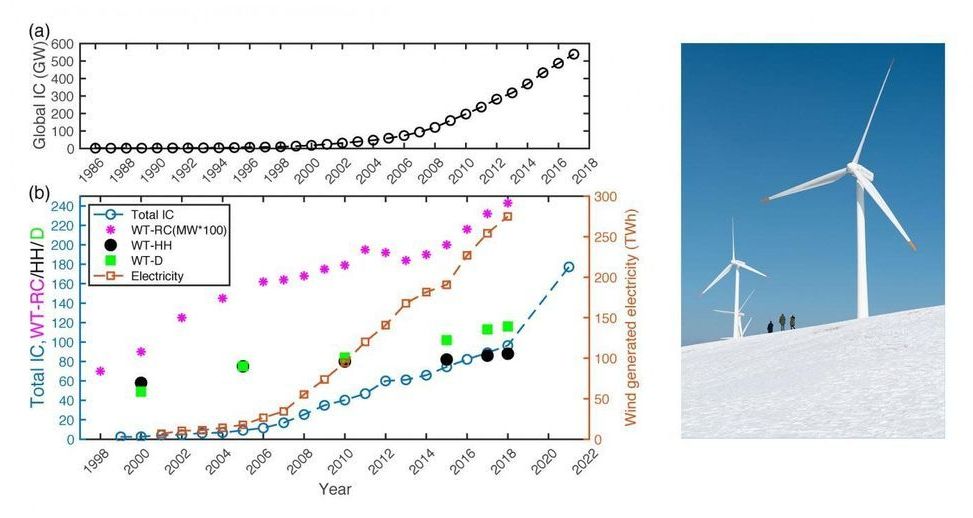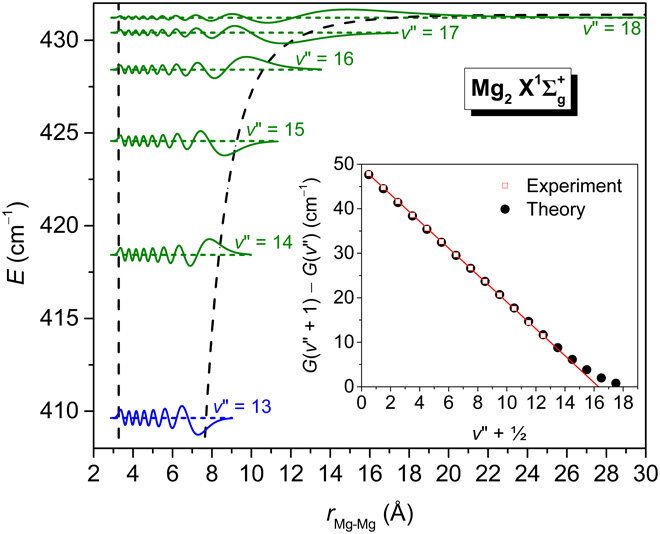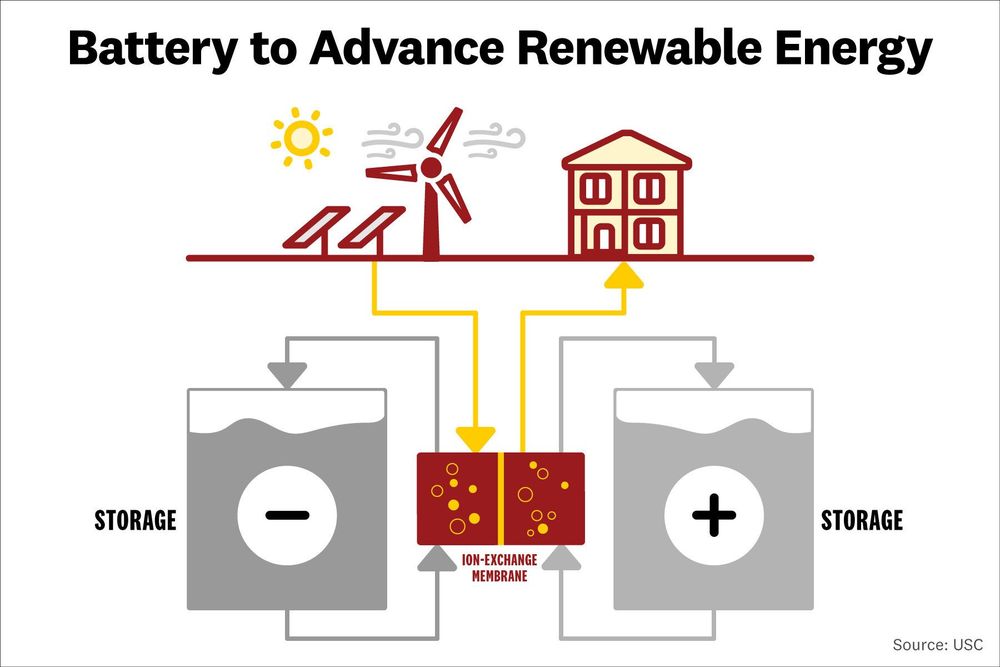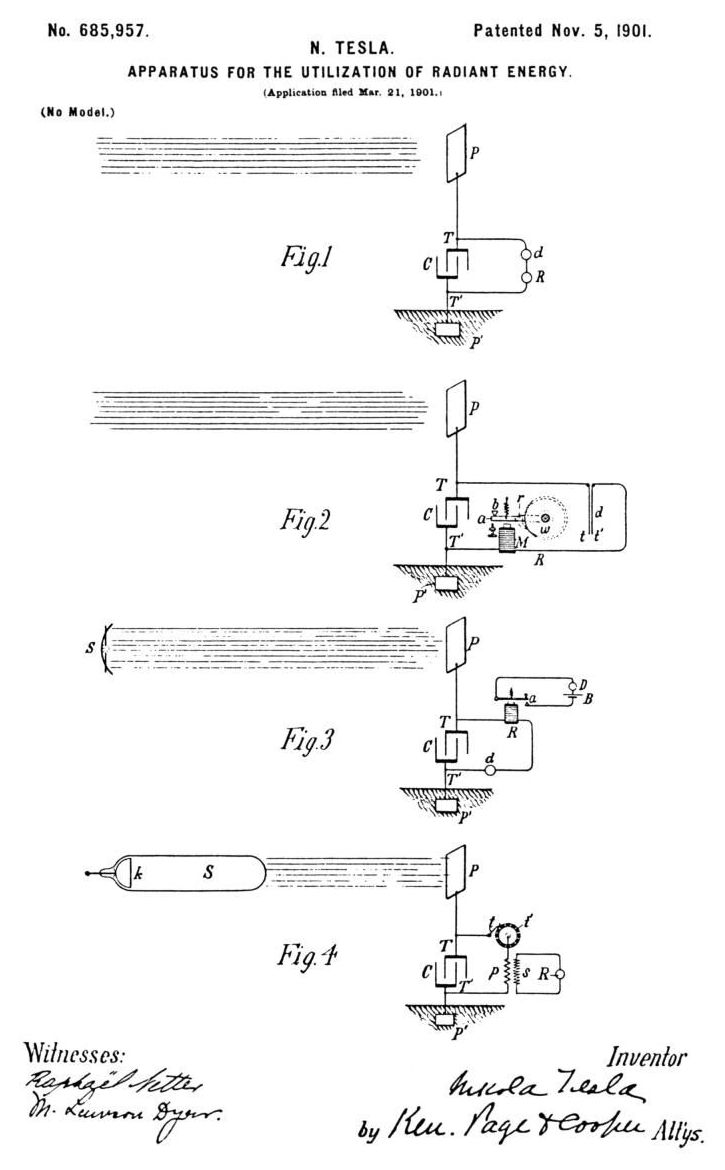Archive for the ‘energy’ category: Page 251
Apr 14, 2020
Supercomputing future wind power rise
Posted by Saúl Morales Rodriguéz in categories: energy, supercomputing, sustainability
Wind power surged worldwide in 2019, but will it sustain? More than 340,000 wind turbines generated over 591 gigawatts globally. In the U.S., wind powered the equivalent of 32 million homes and sustained 500 U.S. factories. What’s more, in 2019 wind power grew by 19 percent, thanks to both booming offshore and onshore projects in the U.S. and China.
A study by Cornell University researchers used supercomputers to look into the future of how to make an even bigger jump in wind power capacity in the U.S.
“This research is the first detailed study designed to develop scenarios for how wind energy can expand from the current levels of seven percent of U.S. electricity supply to achieve the 20 percent by 2030 goal outlined by the U.S. Department of Energy National Renewable Energy Laboratory (NREL) in 2014,” said study co-author Sara C. Pryor, a professor in the Department of Earth and Atmospheric Studies, Cornell University. Pryor and co-authors published the wind power study in Nature Scientific Reports, February 2020.
Apr 13, 2020
Quantum computation solves an old enigma: Finding the vibrational states of magnesium dimer
Posted by Quinn Sena in categories: chemistry, energy, quantum physics
High vibrational states of the Magnesium dimer (Mg2) are an important system in studies of fundamental physics, although they have eluded experimental characterization for half a century. Experimental physicists have so far resolved the first 14 vibrational states of Mg2, despite reports that the ground-state may support five additional levels. In a new report, Stephen H. Yuwono and a research team in the departments of physics and chemistry at the Michigan State University, U.S., presented highly accurate initial potential energy curves for the ground and excited electron states of Mg2. They centered the experimental investigations on calculations of state-of-the-art coupled-cluster (CC) and full configuration interaction computations of the Mg2 dimer. The ground-state potential confirmed the existence of 19 vibrational states with minimal deviation between previously calculated rovibrational values and experimentally derived data. The computations are now published on Science Advances and provide guidance to experimentally detect previously unresolved vibrational levels.
Background
Weakly bound alkaline-earth (AE2) dimers can function as probes of fundamental physics phenomena, such as ultracold collisions, doped helium nanodroplets, binary reactions and even optical lattice clocks and quantum gravity. The magnesium dimer is important for such applications since it has several desirable characteristics including nontoxicity and an absence of hyperfine structure in the most abundant 24 Mg isotope that typically facilitates the analysis of binary collisions and other quantum phenomena. However, the status of Mg2 as a prototype heavier AE2 species is complicated since scientists have not been able to experimentally characterize its high vibrational levels and ground-state potential energy curve (PEC) for so long.
Apr 12, 2020
Scientists develop a better redox flow battery
Posted by Quinn Sena in categories: energy, sustainability
USC scientists have developed a new battery that could solve the electricity storage problem constraining widespread use of renewable energy.
The technology is a new spin on a known design that stores electricity in solutions, sorts the electrons and releases power when it’s needed. So-called redox flow batteries have been around awhile, but the USC researchers have built a better version based on low-cost and readily available materials.
“We have demonstrated an inexpensive, long-life, safe and eco-friendly flow battery attractive for storing the energy from solar and wind energy systems at a mass-scale,” said chemistry professor Sri Narayan, lead author for the study and co-director of the Loker Hydrocarbon Research Institute at USC.
Apr 11, 2020
Tesla’s Virtual Power Plant Is Already a Success
Posted by Quinn Sena in categories: energy, sustainability

Tesla’s extreme Australian makeover continues with a new “virtual power plant,” part of the continent’s overall program to encourage these collections of renewable resources. Tesla is just the first to make and report on a virtual power plant for the program.
Like the large energy storage facility Tesla operates in South Australia, the goal of the virtual power plant is to both collect energy and store it to be fed back into the grid. The pilot virtual plant is distributed across the rooftops of 1,000 low-income homes in South Australia, and Tesla says its goal is to eventually have 50,000 solar rooftops there. That number might sound small, but South Australia only has about 1.6 million residents.
Apr 10, 2020
Germany Breaks Record: Produces 35% of Electricity From Renewables so Far This Year
Posted by Fyodor Rouge in categories: energy, sustainability
Germany has broken another renewable energy record but officials say there’s still room for improvement. The German Renewable Energy Federation (BEE) reported Sunday that the combined share of renewable energy in the electricity, transport and heating sectors was 15.2 percent in the first half of 2017, up from 14.8 percent during the same period last year.
For the electricity sector alone, renewables supplied a record 35 percent of the country’s power in the first six months of 2017, about a 2 percent increase from 2016’s numbers. To compare, renewables accounted for only 15 percent of the United States’ total electricity generation in 2016.
Despite the new benchmark, BEE acting managing director Harald Uphoff told DW that Germany’s transition to clean energy across all sectors is not happening fast enough. The BEE report showed that renewables provided only 5.1 percent of energy consumed in the transport sector and 13.6 percent in heating.
Apr 10, 2020
DARPA Wants An Underwater Drone That Can Stay at Sea Forever
Posted by Kelvin Dafiaghor in categories: drones, energy
Graphene hematene batteries eternal sea power.
What’s better than an underwater drone? An underwater drone that can remain at sea forever, or at least for long periods.
By Michael Peck
Apr 10, 2020
Researchers develop one-way street for electrons
Posted by Quinn Sena in categories: energy, internet
Researchers at the University of North Carolina at Chapel Hill made a one-way street for electrons that may unlock the ability for devices to process ultra-high-speed wireless data and simultaneously harvest energy for power. The researchers did this by shaping silicon on a microscopic scale to create a funnel, or “ratchet,” for electrons.
This method overcomes the speed limitations of prior technologies by removing interfaces that tend to slow down devices.” This work is exciting because it could enable a future where things like low-power smartwatches are wirelessly charged from the data they already receive without ever needing to a leave a person’s wrist,” said James Custer Jr., a doctoral student in UNC-Chapel Hill’s College of Arts & Sciences.
The findings were published April 10 in the journal Science. Custer is lead author. He worked with collaborators at Duke and Vanderbilt universities.
Apr 10, 2020
WO2008068878A1 — Infinite power generator
Posted by Quinn Sena in categories: energy, space
It is contemplated that solving the problem of anxiety in finding an alternativeergy for coping with finite resources and exhaustion of fossil fuel resources would require a great deal of time even when mankind launches full-scale efforts and continues all-out efforts. The of an infinite power capable of supplying a clean, safe, infinite kineticergy for the and prosperity of human society with no need of consumable raw materials would improve the and wouldhance andrich the functionality thereof, would contribute to thehanced prosperity of human society, and wouldable city construction on not only the earth but also other planets.
U NITED S TATES P ATENT O FFICE.
NIKOLA TESLA, OF NEW YORK, N. Y.
APPARATUS FOR THE UTILIZATION OF RADIANT ENERGY.















